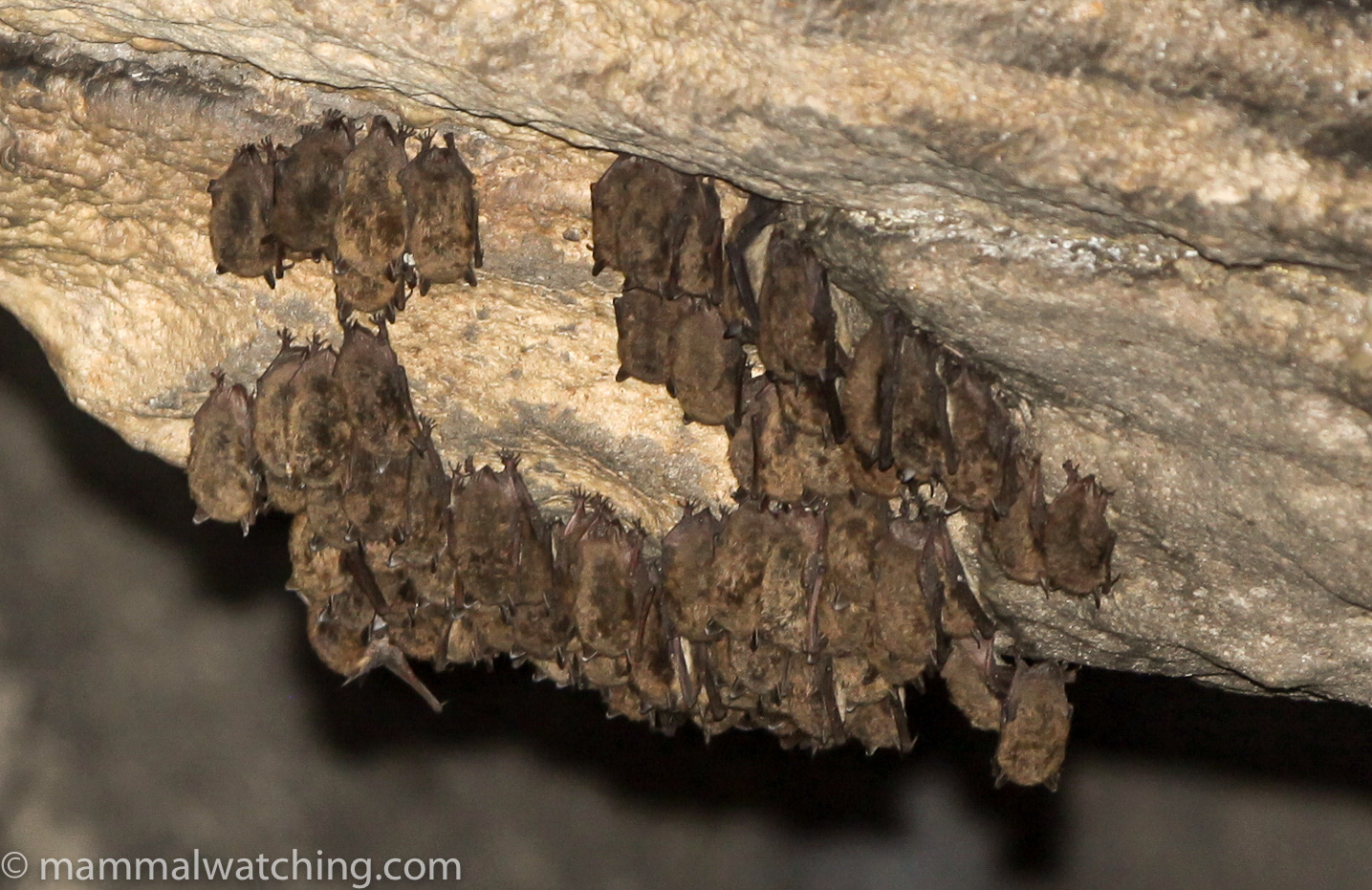
Tennessee
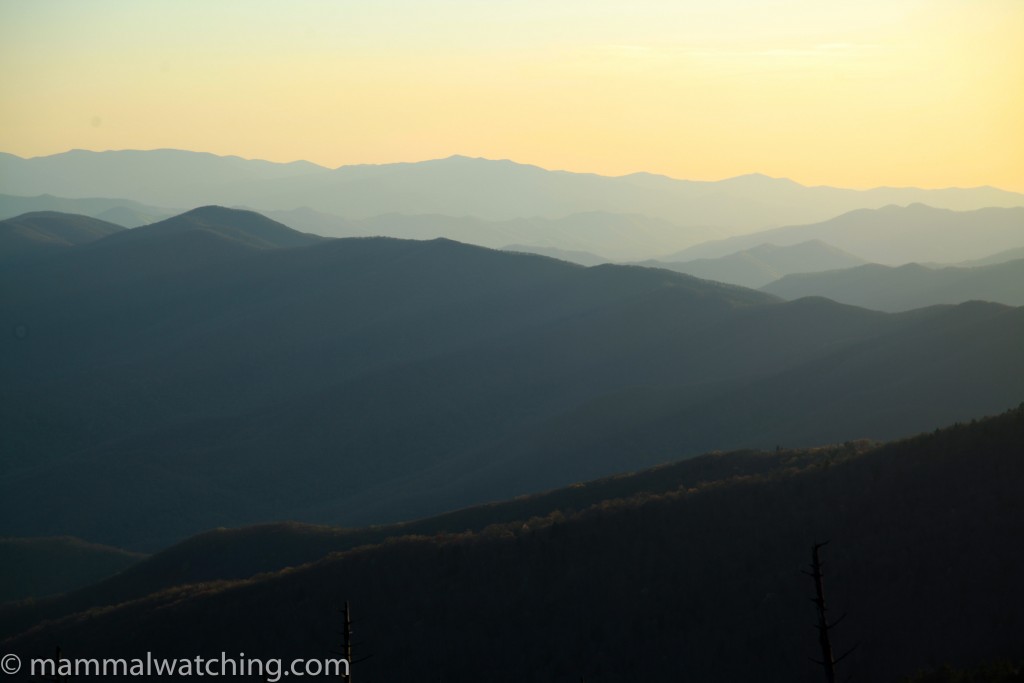
Great Smoky Mountains National Park
Great Smoky Mountains National Park and Surrounds
In April 2012 John Fox and I headed down to Tennessee for the Easter weekend to meet up with Vladimir Dinets who was living in Knoxville and had offered to show us around.
Tennessee is only a long day’s drive from New York City but it felt like a different continent. Tennessee may well hold the twin records for the world’s friendliest and fattest citizens. And if a billboard wasn’t advertising that Jesus had died for our sins, it was most probably announcing that there was a Taco Bell at the next exit.
John met me in Charlotte and we drove west to spend a couple of days in the Knoxville area. Our trip began with a detour into the eastern side of the Great Smoky Mountains National Park and a herd of Elk near the Cataloochee Campground. From there we headed to a fabulous sunset from the top of Clingman’s Dome in the middle of the park. A great view but no mammals. Perhaps due to the sub zero wind chill, perhaps due to the steady procession of puffing tourists, or perhaps because of the fleet of emergency vehicles that shot up to the top just as we were leaving to try to resuscitate one of the tourists who had stopped puffing.
On the drive back to Townsend a White-tailed Deer and a Raccoon crossed the road.
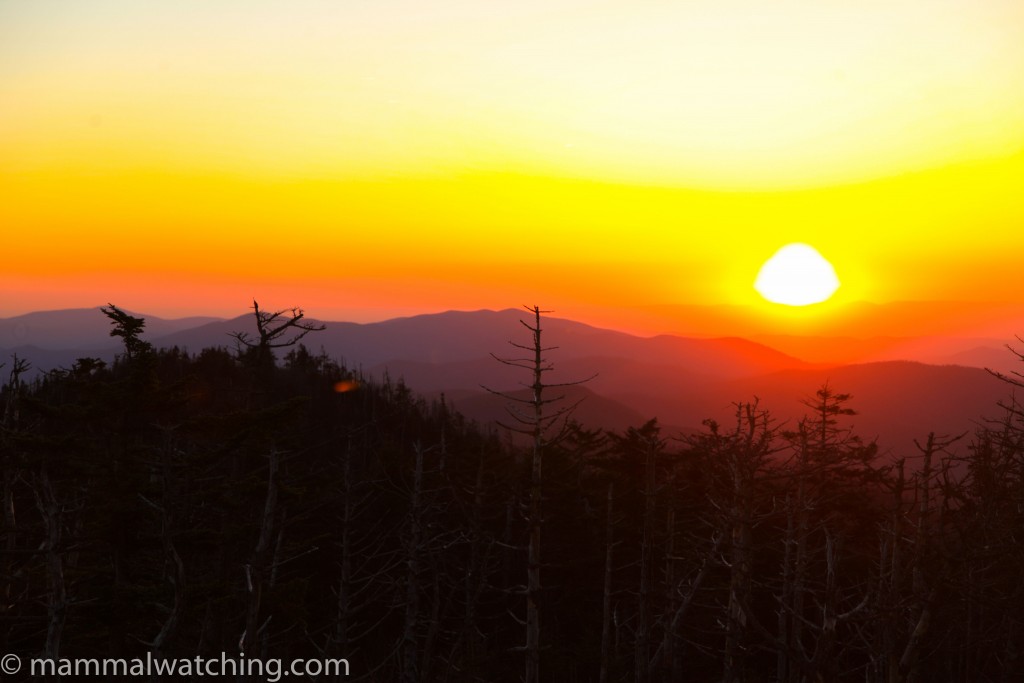
Sunset from Clingman’s Dome
We spent the night in Townsend and met up with Vladimir at 5 a.m. the next morning to walk some of the loop road around the Cades Cove area of the park before it opened to traffic. A couple of miles along the road we checked out the small (and gated) Gregory’s Cave, a couple of hundred metres off the road. There was a lone Tricolored Bat (Eastern Pipistrelle) (Pipistrellus subflavus) on our side of the gate, along with a couple of other bats on the far side of the cave. One appeared to be an Eastern Pipistrelle but the other may or may not have been an Eastern Small-footed Myotis (Myotis leibii). It was unfortunately too far off to photograph well, plus the gate was in the way and my camera had misted up.
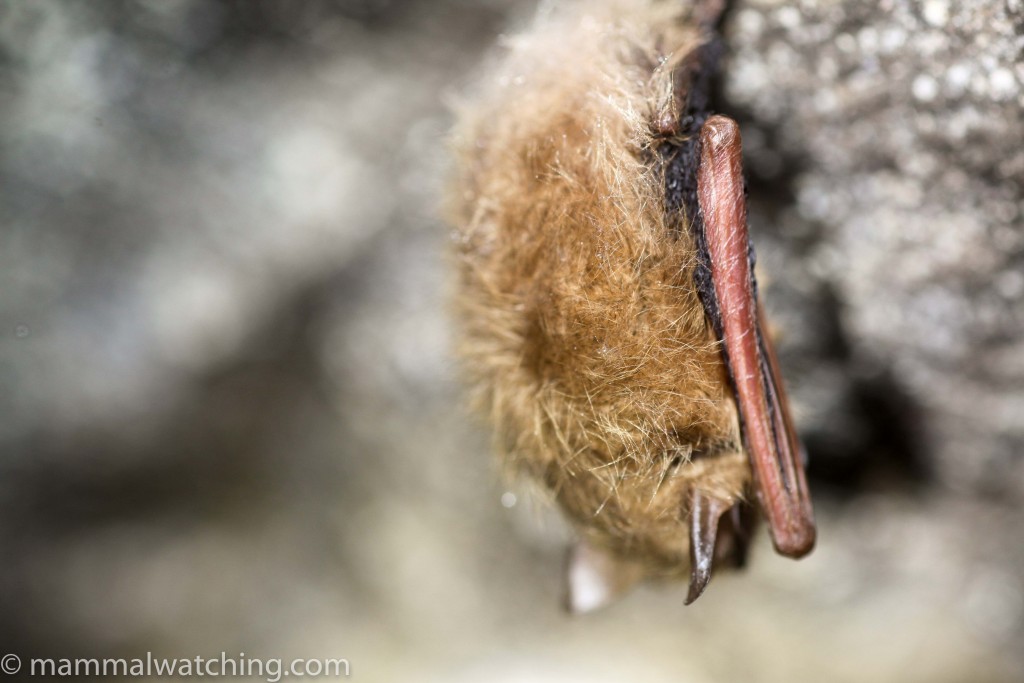
Tricolored Bat (Eastern Pipistrelle), Pipistrellus subflavus
Walking back to the car park after dawn we saw a few White-tailed Deer out in the meadows. Eastern Gray Squirrels were running around behind the Best Western in Townsend.
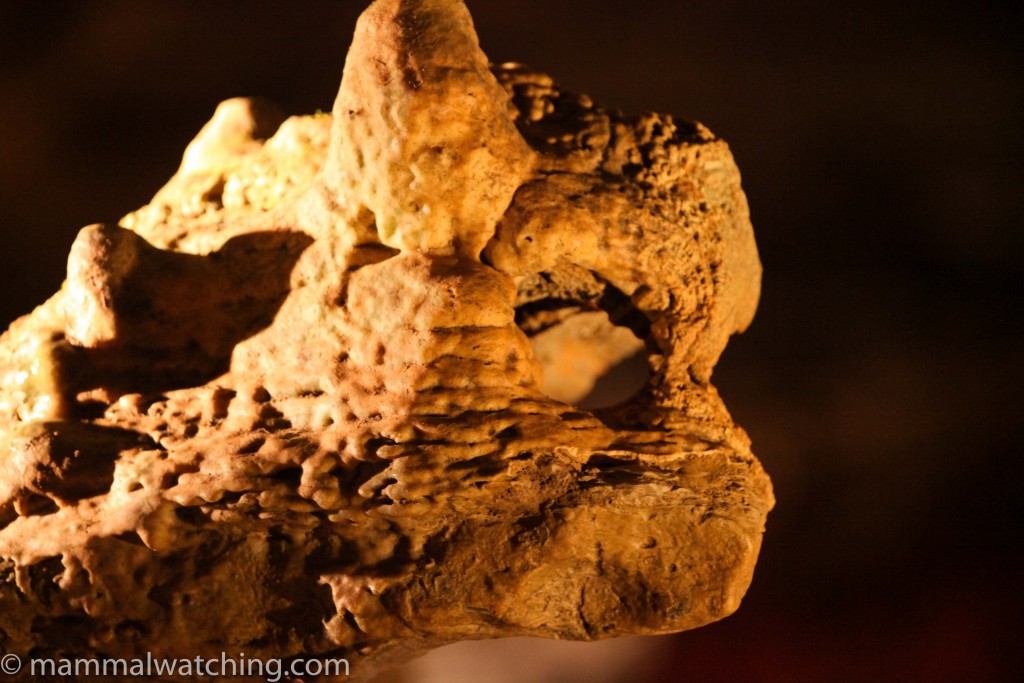
Forbidden Caverns
Later that morning we visited the commercial Forbidden Caverns. Although they seem quite interested in their bats, the tour was irritating in a ‘keep-up, donotuseflashlights, donottakeflashphotos, hurryupandlookatanotherstalactite’ kind of a way. A month or so before we arrived they’d had good numbers of hibernating bats but a lot can change in a month: the warmer weather meant most of the bats had left. The guys at the Caverns said 5 species were fairly common in winter – Tricoloured Bats, Little Brown Bats, Big Brown Bats, Grey and Northern Myotis. We saw plenty of Tricolored Bats in early April and – I think – a few Little Brown Bats.
After lunch we visited Merrill Cave, which is on private property and where you pay an informal $5 to visit on your own. Again there had been plenty of bats here in the winter but they had all flown the coop other than a couple of
We saw a few Woodchucks on the drive back to Knoxville. After dropping Vladimir at home, John and I headed to the town of La Follette with a 5 a.m. rendezvous set for the next day with Vladimir. We set a few traps and skipped spotlighting.
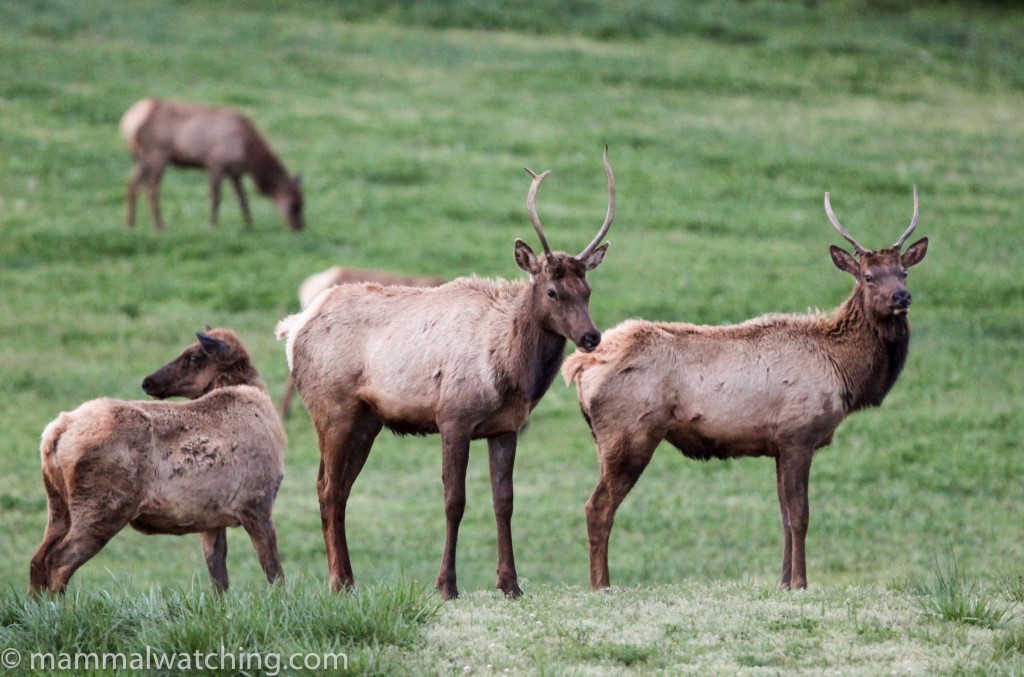
Elk, Cervis elaphus, from the viewing tower, Hatfield Knob
The traps were all empty the next morning, but we did see an impressive herd of Elk from the watch tower at Hatfield Knob, 7 miles north of town. The Elk are usually out in the open at dawn and in the late afternoon. Vladimir had once seen a Bobcat here.
Walking back to the car we saw a couple of Cottontails. They may have been Appalachian Cottontails or a hybrid Eastern/Appalachian or even an undescribed species (rabbits from the area are being studied at the moment). Our photos were inconclusive: one animal at least had the black edging to the ears, but lacked the black forehead spot, both of which Appalachian Cottontails are supposed to have.
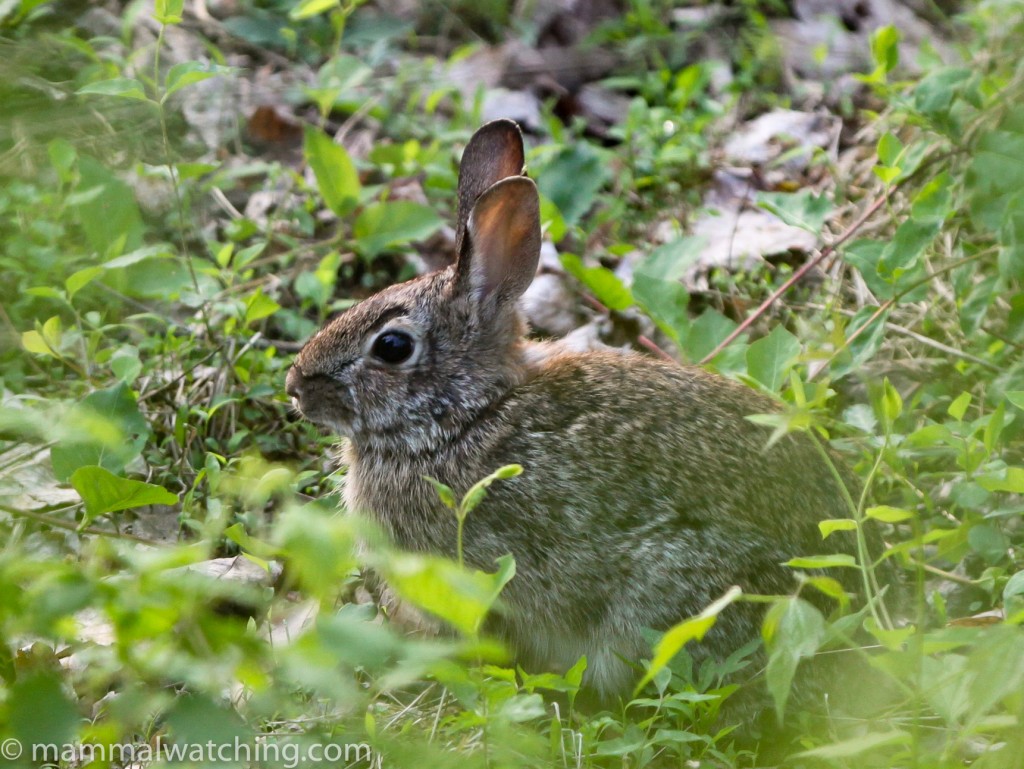
Cottontail species
From there, an hour’s drive took us to Cumberland Gap National Park on the border with Kentucky, and the first of their twice daily Gap Cave tours. A few weeks earlier the caves had been home to several species of bats but numbers had dwindled. The tour was quiet, informative and much more bat watching-friendly than the Forbidden Caverns tour.
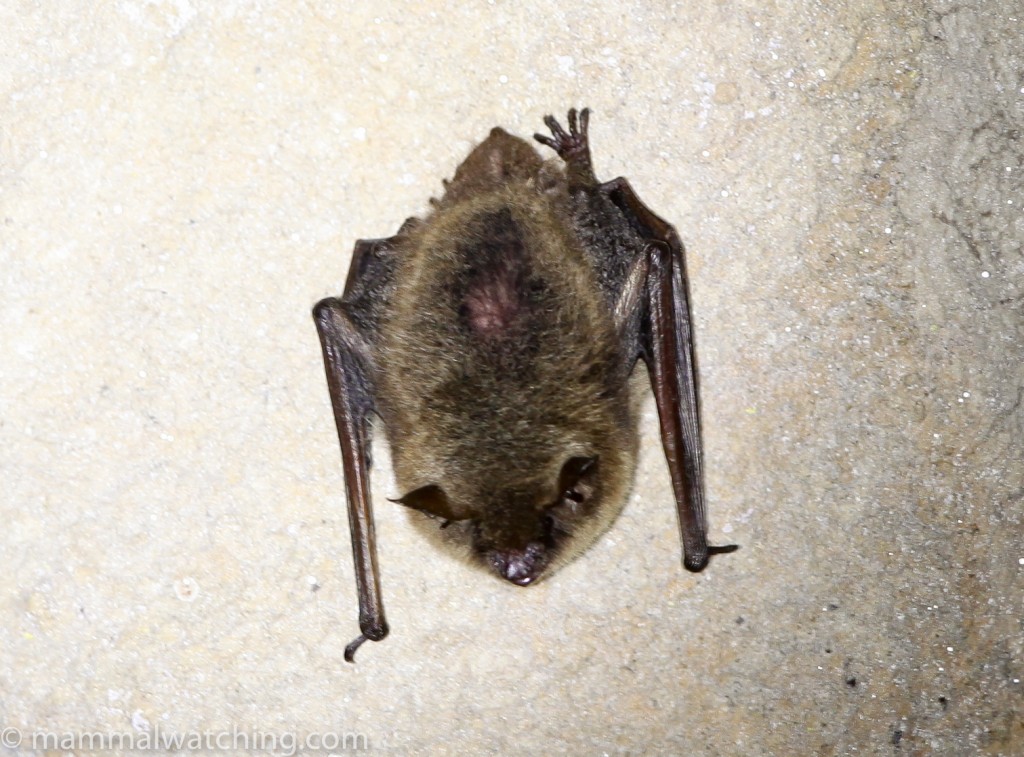
Little Brown Bat, Myotis lucifugus
We saw Tricolored Bats, Little Brown Bats, Indiana Myotis and what appear to have been one or more Northern Myotis.
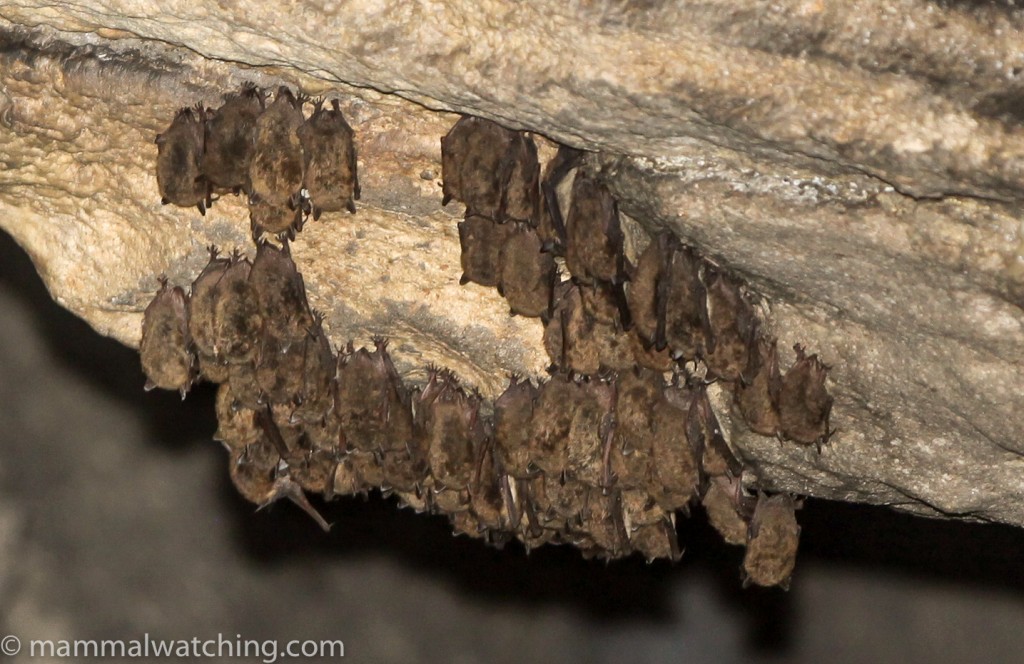
Indiana Myotis, Myotis sodalis
Grey Myotis and Big Brown Bats were also present a few weeks earlier but we didn’t see any, at least none we were sure about.
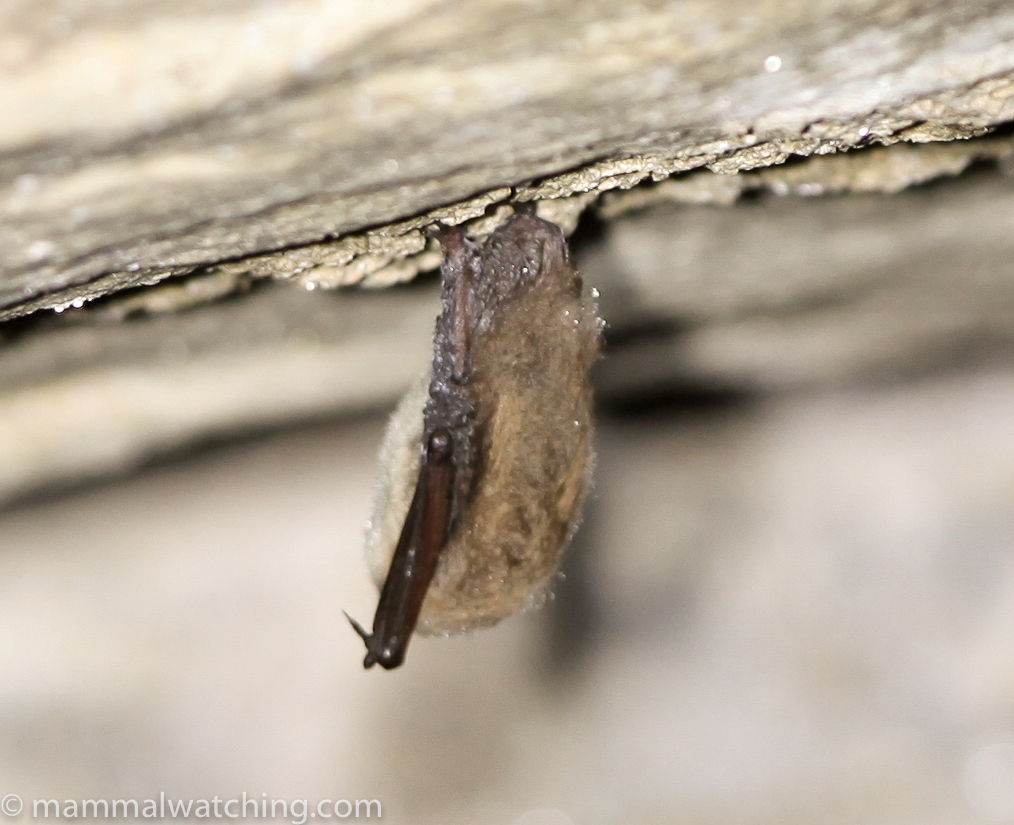
Northern Myotis, Myotis septentrionalis … I think
Some bats remained unidentified. If anyone has any opinions on the flavour of the two species below I would be interested to know.
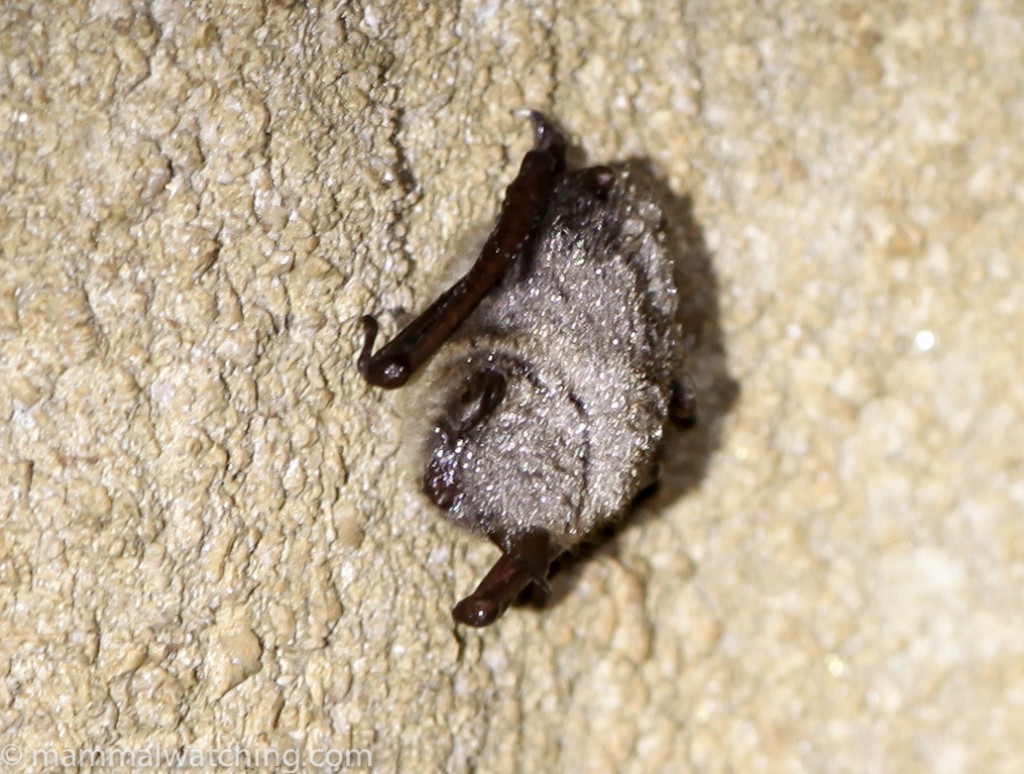
Unidentified Bat
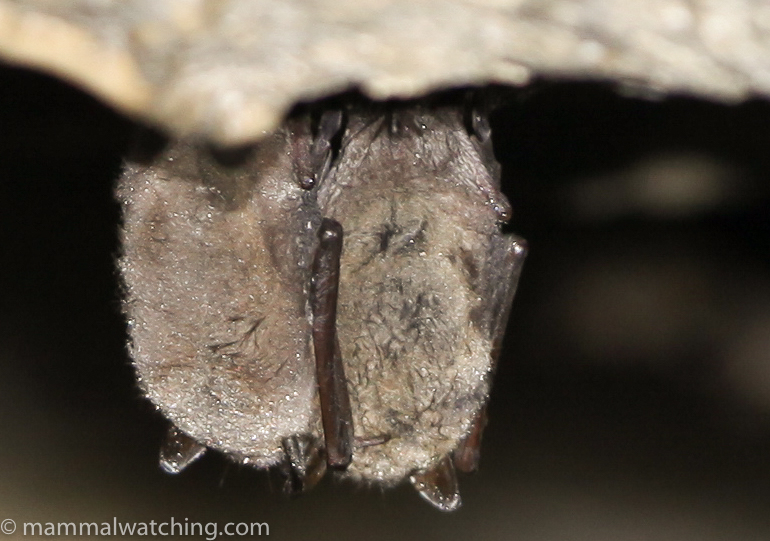
Unidentified Bats
We left the caverns a little before noon and toured around a few of Vladimir’s favourite protected areas in northern Tennessee for the rest of the afternoon. Pretty country but no mammals.
Although Vladimir was keen to keep going for some spotlighting, I found it harder to resist a chance to drink beer and sleep for longer than six hours. So we thanked Vladimir again for all his help over the weekend and headed back to Townsend.
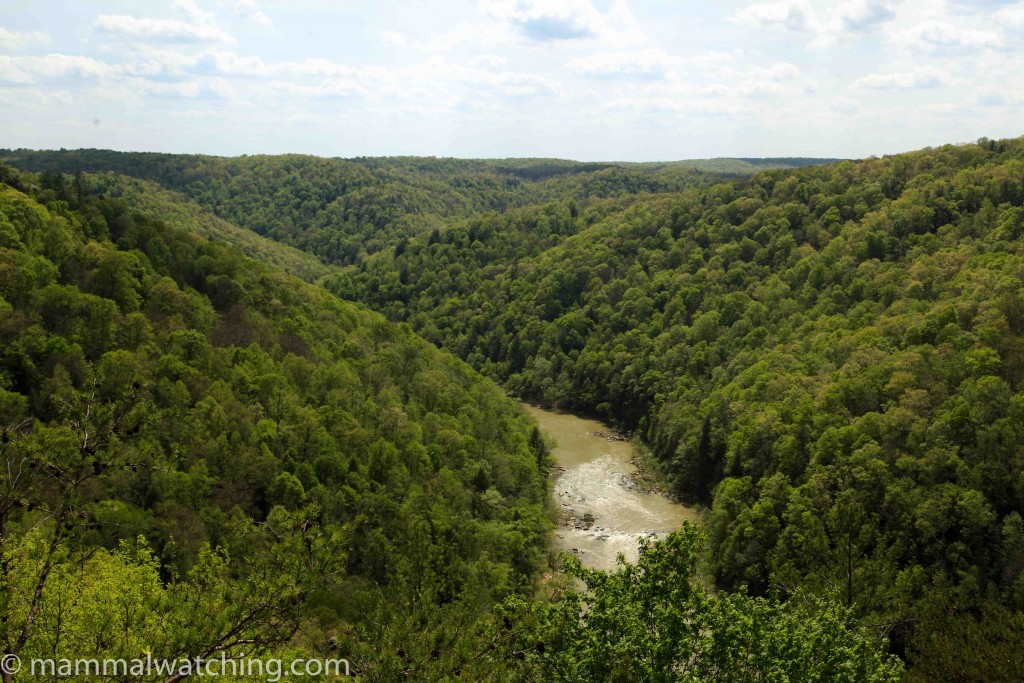
Big South Fork Recreation Area
Community Reports
Moles and Voles, 2012: Vladimir Dinets’s notes on sightings of Hairy-tailed Moles, Allegheny Cottontails, woodrats and Rafinesque’s Big-eared Bats in Tennessee.
Also See
Please email me if you have tips for mammal watching in this area.


Leave a Reply
You must be logged in to post a comment.